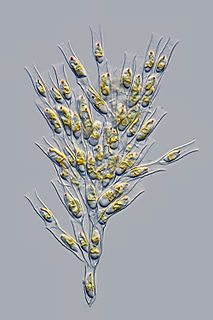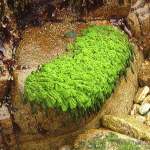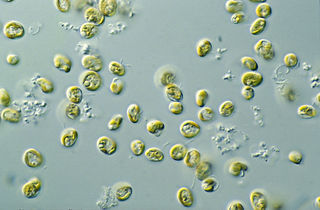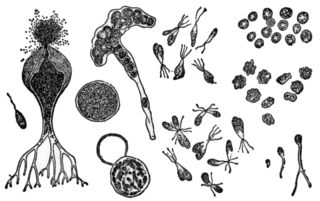| Cutleriales | |
|---|---|
 | |
| Cutleria cylindrica | |
| Scientific classification | |
| (unranked): | SAR |
| Superphylum: | Heterokonta |
| Class: | Phaeophyceae |
| Order: | Cutleriales Bessey |
| Family: | Cutleriaceae Griffith & Henfrey |
| Genera | |
Cutleria Greville | |
| Wikimedia Commons has media related to Cutleriales . |
Cutleriales is an order in the brown algae (class Phaeophyceae). It is composed of 2–6 genera, based upon various circumscriptions. [1] [2] The circumscription in the taxobox (right) is the list of genera from AlgaeBase, although only 3 of these genera are listed as containing species, 11 species in Cutleria, and one each in Microzonia, and Zanardinia. Lee circumscribes the order with only the two genera, Cutleria and Zanardinia.
In biological classification, the order is
- a taxonomic rank used in the classification of organisms and recognized by the nomenclature codes. Other well-known ranks are life, domain, kingdom, phylum, class, family, genus, and species, with order fitting in between class and family. An immediately higher rank, superorder, may be added directly above order, while suborder would be a lower rank.
- a taxonomic unit, a taxon, in that rank. In that case the plural is orders.

The brown algae, comprising the class Phaeophyceae, are a large group of multicellular algae, including many seaweeds located in colder waters within the Northern Hemisphere. Most brown algae live in marine environments, where they play an important role both as food and as habitat. For instance, Macrocystis, a kelp of the order Laminariales, may reach 60 m (200 ft) in length and forms prominent underwater kelp forests. Kelp forests like these contain a high level of biodiversity. Another example is Sargassum, which creates unique floating mats of seaweed in the tropical waters of the Sargasso Sea that serve as the habitats for many species. Many brown algae, such as members of the order Fucales, commonly grow along rocky seashores. Some members of the class, such as kelps, are used by humans as food.











